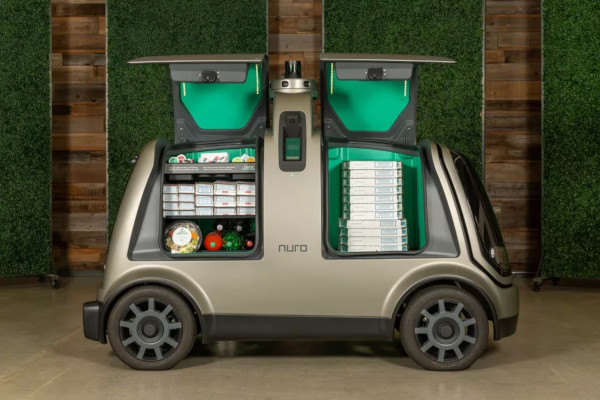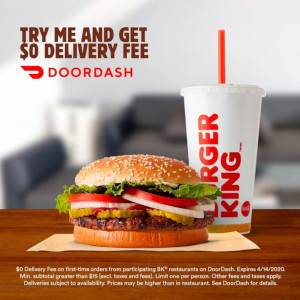I don’t know about you, but I’ve had a very hard, long-seeming week. Mom took a turn for the worse on Tuesday and I’ve been spending a lot more time and effort on helping her just get through each day. As a consequence, I’m feeling the pressure of temptation to call out for a Pizza. But some folks wouldn’t think twice…
 Driverless vehicles also offer an attractive direction for Fast Food and regular
Driverless vehicles also offer an attractive direction for Fast Food and regular
resto operators to streamlines their operations and staffing costs…
The big restaurants chains have been hitting hard on their fans to order by smart phone app or website as the COVID-19 lock downs are reinstated amid the rise of a third wave (or second, depending on how you measure it). That scenario includes variations of limited contact or fully contactless delivery. But that accounts for only a small part of the overall picture.
Convenience is addicting
A new study reveals that Canadians (and Americans, too, by association) have used remote ordering and some form of delivery much more heavily since the pandemic moved in on them back in the early spring.
The Agri-Food Analytics Lab at Dalhousie University, in partnership with Caddle, has released a study on e-commerce in food industry called The impact of COVID-19 on the food industry and e-commerce. Overall, the survey indicates that app and website ordering pages and associated delivery services have flourished and proliferated during the pandemic crisis, and many grocery retailers and restaurateurs are considering carrying on with such services after the pandemic passes.
Likewise, many consumers have indicated they intend to use such services permanently, after the crisis eases once and for all. And the number one reason cited by folks polled by by Caddle was… Convenience. And that’s just fine with retailers, too.
Selected survey results
An abstract of the survey results just out says:
“In Canada, we estimate that over $12 billion dollars have been committed to online interface services in the food industry, for the next 5 years. The report looks at what Canadians are buying online and identifies reasons why Canadians are using online services to get food. It also looks at how much online activity we are expecting after the pandemic. A total of 7,290 Canadians were surveyed in early November.”
The actual numbers said:
- A total of 31.3% of Canadians have used curb-side pick-up or home delivery services from grocers over the last 6 months.
- While 28.6% have used an online service to get food delivered directly from a restaurant.
- 26.3% of Canadians have used a phone application to get food from a restaurant.
- Meal kits were also a popular choice, at 12.8%.
- Farmers’ markets, at 4.1%.
- 57.1% of Boomers have not used any online services in the last 6 months.
- About a quarter (28.5%) of Millennials have also not used any services.
- In all, 63.8% of Canadians have ordered food online in some capacity over the last 6 months.
The most popular food types were:
- Fast food (33.1%).
- Fruits and vegetables (22.0%).
- Dairy products (21.5%), and –
- Bakery (20.6%).
- A total of 8.7% have ordered alcoholic beverages online in the last 6 months.
Overall trends
“Before the pandemic 29.6% of Canadians reported to have ordered food online once a week. In the last 6 months that percentage went up to 45.4%. We estimate that over the last 6 months, 4.2 million more Canadians are ordering food online at least once a week than before the pandemic. When asked if Canadians intend to order food online at least once a week after the pandemic, 49.4% intend to do so.”
“Before the pandemic, online sales in the food industry (retail) were estimated at approximately 1.7%, according to Nielsen. Due to COVID-19, online sales could triple by the end of 2020”
Retailers already preparing for future
Many retailers and restaurateurs are considering maintaining many of the new protocols and business model features they’ve adopted during the pandemic. That would simplify their operations, cost them less, and save on staffing costs.Delivery service would also give resto operators another variable to manipulate in their occasional discount offers (see photo, top of page). Fast Food franchisees say they’re in favour of the proposition. Now we know that many consumers like the idea, too.
My take
Sounds fine to me… If you don’t mind paying more for delivery. If limiting consumer access to restaurants to save costs can result in savings for consumers, too, – or at least mitigate further increases in menu prices – that’s also good.
Burger King recently revealed its plan for the BK of the future, heading straight down he minimum-contact, maximum-automation highway. What do you think?
~ Maggie J.

